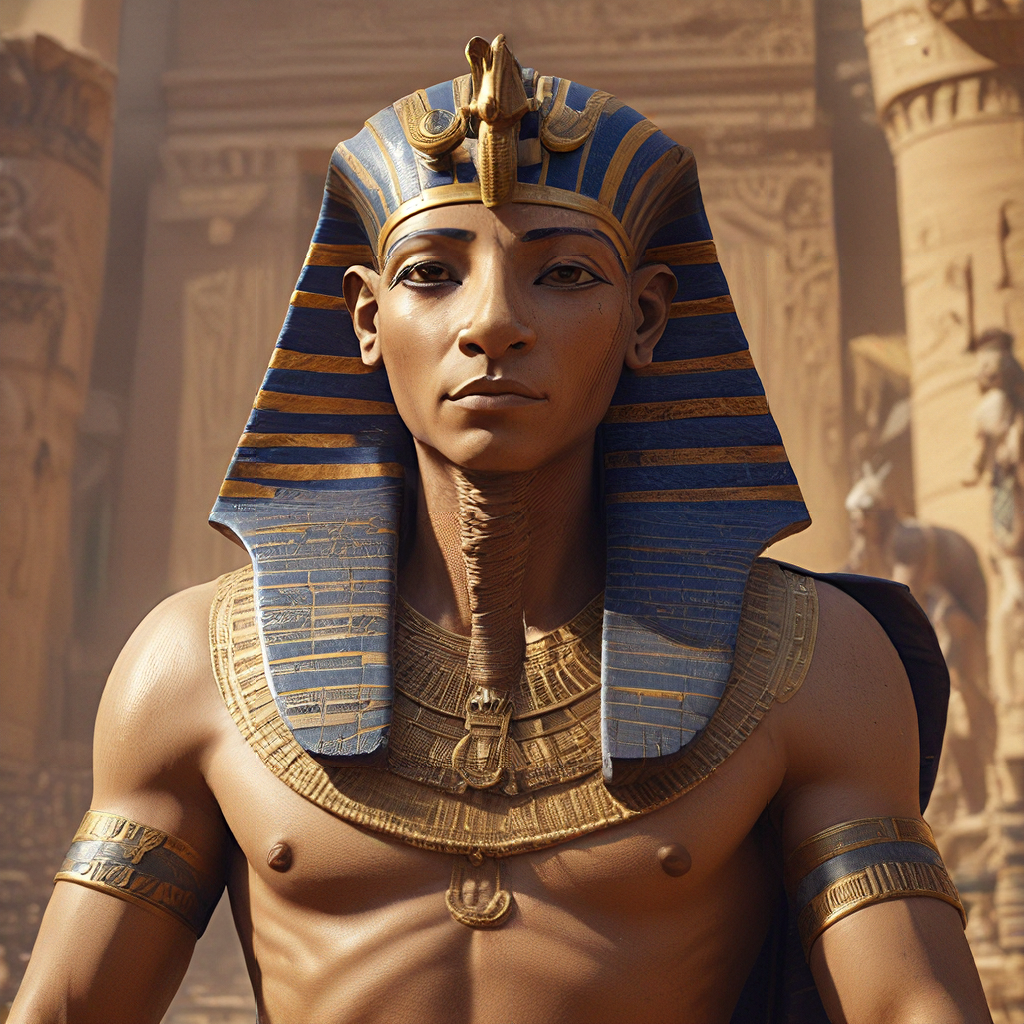Rameses II: The Pharaoh who Defied Time
I. Introduction
Rameses II, the mighty pharaoh of ancient Egypt, reigned for an astounding 67 years, leaving behind a legacy that continues to fascinate and inspire generations. His reign, marked by military triumphs, grand construction projects, and a profound belief in his divine right to rule, reshaped the landscape of ancient Egypt and cemented his place as one of the most influential figures in human history. Known as the “Great Ancestor” by later pharaohs, Rameses II defied the passage of time through his enduring achievements, leaving behind an imprint on not just Egypt, but the entire world.
II. Rise to Power and Early Reign
Born into the 19th Dynasty, Rameses II ascended to the throne at a young age, inheriting a kingdom that was already expanding its influence. His early years were marked by a focus on consolidating power and extending Egyptian dominion. He faced challenges from rebellious Libyan tribes, quickly putting down their revolts and reasserting Egyptian authority in the western desert. He also secured Nubia, a vital source of resources and manpower, furthering Egyptian expansion southwards. This early focus on stability and expansion laid the groundwork for his later achievements.
III. Military Prowess and the Battle of Kadesh
Rameses II’s reign was characterized by his legendary military campaigns, which made him a formidable figure in the ancient world. He led numerous battles against neighboring kingdoms, solidifying Egyptian dominance in the region. Among these battles, the Battle of Kadesh, a clash against the Hittite Empire, stands out as a pivotal moment in his reign. This epic encounter, fought along the Orontes River in modern Syria, tested his leadership and military skill to the utmost. Although initially facing a strategic disadvantage, Rameses II rallied his troops and ultimately claimed victory. The Battle of Kadesh became a symbol of his military prowess and a testament to his strategic brilliance. His triumphs are vividly depicted in murals and inscriptions throughout Egypt, celebrating his bravery and his role as a divine warrior.
IV. Diplomatic Mastermind
Despite his military prowess, Rameses II recognized the importance of diplomacy in maintaining peace and ensuring the prosperity of his kingdom. Recognizing the futility of unending conflict, he forged a peace treaty with the Hittites, marking a pivotal shift away from war and towards a diplomatic solution. This landmark treaty, inscribed on silver tablets, ensured decades of peace between the two empires, demonstrating Rameses II’s ability to see beyond the battlefield and prioritize the well-being of his people. The peace treaty between Egypt and the Hittites is considered a triumph of diplomacy in the ancient world, showcasing Rameses II’s wisdom and foresight.
V. The Grand Builder
Beyond his military campaigns and diplomatic achievements, Rameses II was a visionary builder, leaving behind an unparalleled legacy of architectural marvels that continue to awe and inspire. Throughout his reign, he commissioned grand construction projects across Egypt, transforming the landscape and leaving his mark on the nation’s history. One of his most iconic achievements is the Abu Simbel temples, a testament to his power and grandeur. These monumental temples, carved into the cliffs of Nubia, showcase the pharaoh’s might and his divine connection. The temples were designed to align with the sun’s rays on specific days, creating a breathtaking spectacle that underscores the pharaoh’s connection to the celestial realm. Other significant projects include the Ramesseum, a massive mortuary temple that served as his final resting place, and the expansion of existing temples, like Karnak, with new additions that emphasized his reign and legacy. These architectural masterpieces stand as lasting memorials to his greatness, showcasing his dedication to the gods and his enduring impact on ancient Egypt.
VI. Legacy as a Divine Ruler
Rameses II’s reign was marked by an unwavering belief in his divine right to rule. He was not merely a king, but a god-king, a chosen representative of the gods on earth. This divine connection is evident in the countless statues and monuments that depict him with the attributes of gods, such as the sun god Ra and the god of creation, Amun. His emphasis on his divinity was designed to strengthen his authority and legitimize his reign. He saw himself as a living embodiment of the divine, connecting his rule to the cosmic order and ensuring his enduring legacy. This focus on his divinity played a critical role in shaping his image and solidifying his place as a supreme ruler. He became known as the “Great Ancestor,” a figure of immense power and wisdom who would continue to be venerated by later pharaohs.
VII. The Reign of Pharaoh
Rameses II’s reign, spanning six decades, was a period of extraordinary achievements and enduring influence. He led his people to unprecedented heights, leaving behind a legacy that would shape the future of Egypt and inspire the world. From his military victories to his diplomatic achievements, from his grand construction projects to his emphasis on his divine authority, his reign stands as a testament to his extraordinary leadership and his unwavering commitment to his people. His legacy continues to inspire awe and admiration, reminding us of the enduring power of human ambition and the lasting impact of a life dedicated to greatness.




